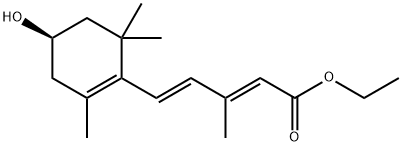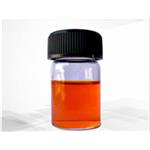Description
Capsanthin is the major colouring compounds contained in the Paprika oleoresin, which is a kind of oil-soluble extract isolated from the fruits Capsicum annuum or Capsicum frutescens, and is a colouring and/or flavouring in food products. As a pink pigment, Capsanthin is very abundant in peppers, accounting for 60% of the proportions of all flavonoids in the peppers. It has antioxidant properties, being able to help the body to scavenge the free radicals as well as inhibiting the growth of cancer cells.
References
http://www.botanical-online.com/english/capsanthin_properites.htm
https://en.wikipedia.org/wiki/Paprika_oleoresin
Description
Capsanthin is a carotenoid that has been found in
C. annuum and has diverse biological activities. It reduces hydrogen peroxide-induced production of reactive oxygen species (ROS) and phosphorylation of ERK and p38 and prevents hydrogen peroxide-induced inhibition of gap junction intercellular communication in WB-F344 rat liver epithelial cells. Capsanthin (0.2 mg/animal) reduces the number of colonic aberrant crypt foci and preneoplastic lesions in a rat model of N-methylnitrosourea-induced colon carcinogenesis. It also reduces ear edema in a mouse model of inflammation induced by phorbol 12-myristate 13-acetate (TPA; ).
Uses
Capsanthin may be used as an analytical reference standard for the quantification of the analyte in red pepper powder, red pepper fruits, paprika and oleoresin using chromatography techniques.
Definition
ChEBI: Capsanthin is a carotenone. It has a role as a plant metabolite.
General Description
Capsanthin, also known as the red pepper carotenoid, is one of the major color pigments of paprika oleoresin, an oil-soluble extract, isolated from the fruits of
Capsicum annum Linn or
Capsicum frutescens. It is widely used as a color additive in food industries across the globe. The photoprotective effect of capsanthin protects human dermal fibroblasts against UVB induced DNA damage.
Hazard
A poison by skin contact.
Biochem/physiol Actions
Capsanthin is a potential nutraceutical, is found in green vegetables and is a constituent of paprika and asparagus. Capsanthin has been shown to exhibit anti-proliferative function.
Safety Profile
A poison by skin
contact. When heated to decomposition it
emits acrid smoke and irritating vapors.
Purification Methods
Possible impurities are zeaxanthin and capsorubin (below). Purify capsanthin by chromatography on a column of alumina (grade IV) and develop with 0.2% EtOH in *C6H6. It




